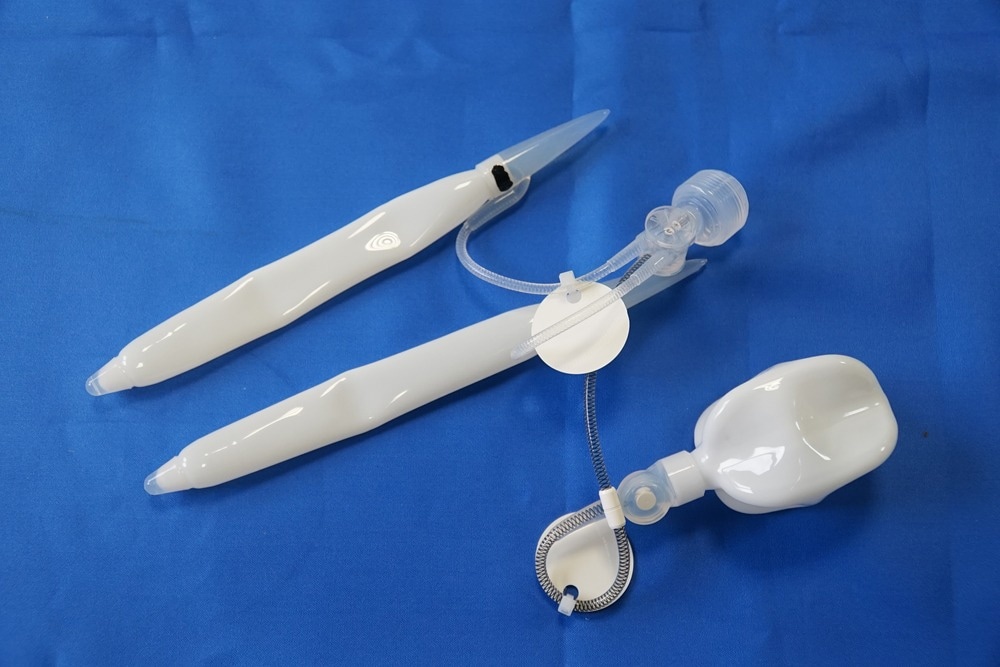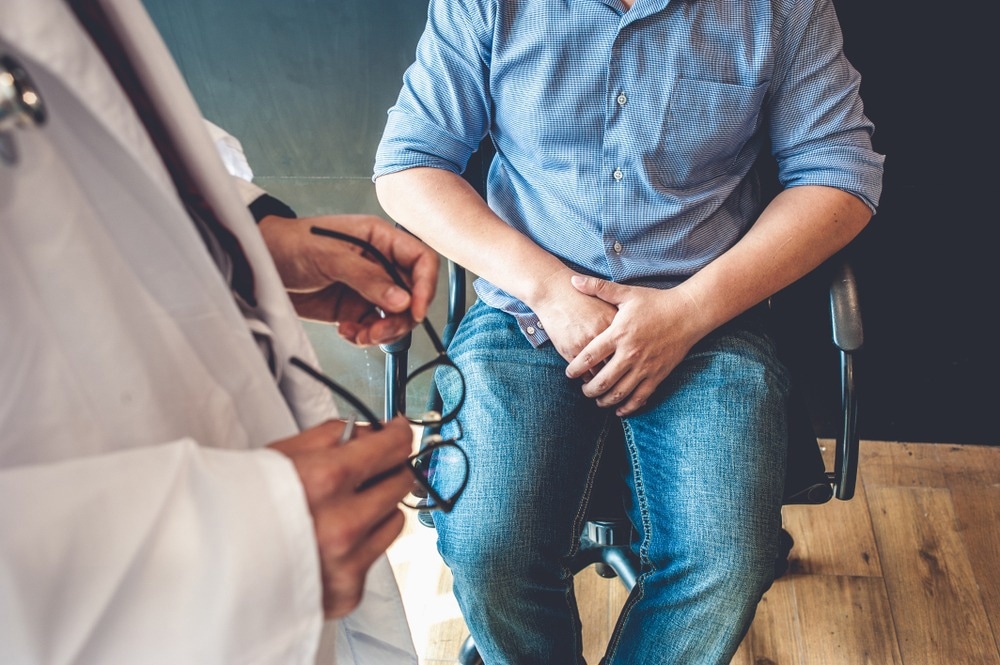Indication for penile implants
Types of penile implants
Patient pathway
First-line therapies for erectile dysfunction
Second-line therapies for erectile dysfunction
References
Further reading
A penile implant, otherwise known as a penile prosthesis, is a device placed into the erectile cylinders of the penis. The purpose of penile implants is to enable men to maintain an erection. It is typically used for men who have erectile dysfunction.

Image Credit: ms.fridman/Shutterstock.com
Penile implants what introduced in the early 1970s. Since then, the technology has advanced greatly due to an improved understanding of both erectile pathophysiology and erectile physiology. Such developments have enabled widespread use and acceptance of these aids and reduced the risk of complications.
Indication for penile implants
Indications for penile implants are related to conditions that impede erection. These include both organic and psychogenic impotence. Psychogenic impotence occurs due to thoughts or feelings that preclude either erection or penetration (psychological reasons) rather than physical pathology.
Of the organic reasons for impotence, diabetes, quadriplegia, paraplegia, and Peyronie's disease are common causes. Peyronie's disease is a chronic, predominantly progressive inflammatory disease that causes a 'connective tissue excrescence,' that is, a projection or outgrowth of the tunica albuginea. The tunica albuginea is the tough fibrous layer of connective tissue surrounding the testis. This is characterized as scar tissue and causes curved and painful erections.
In cases of organic impotence, other modalities are preferred to penal implants as they offer better results. This is because of advances in pharmacotherapy and vascular surgery.
Types of penile implants
Penile implants can be categorized into two general groups. These are malleable devices on inflatable devices.
Malleable implants
Malleable devices are easily implanted and do not contain mechanical parts that may be subject to failure. In addition, they require little manual dexterity, requiring only bending of the device upward before use. However, they do not alter the size or rigidity of penis changes; flexible rods provide a means of permanent rigidity that enables directional and rigid characteristics that enable successful penetration.
Malleable implants are used for indications that include acute priapism or for patients who lack the dexterity required to manipulate the pump used for inflatables. Acute priapism is a prolonged erection of the penis that extends >4 hours and is not relieved by either pharmacologic reversal or orgasm. Estimates suggest that malleable implants are used in less than 10% of patients
Inflatable Implants
Inflatable implants are based on the principles of hydraulics that allow inflation for successful sexual intercourse. Deflation in the detumescence phase is also enabled. The detumescence phase describes the reversal of tumescence come out which is the quality of being engorged (caused by vascular congestion), which occurs during sexual excitation.
Detumescence is the reversal of this process and is characterized by the loss of blood from the erectile tissue enabling it to return to a flooded state. Inflatable devices are more difficult to implant and have a subsequent limitation in their life span due to the eventuality of mechanical failure.
Inflatable implants include two or three parts. A two-part device contains cylinders and a pump. When the pump is used, fluid is transferred from the pump to the cylinders. There is no reservoir of fluid in two-pump devices.
In a three-piece inflatable implant, inflatable cylinders are placed in the penis, a pump is placed in the scrotum, and a reservoir is placed next to the bladder. Using the prosthesis again uses a pump that transfers fluid from a reservoir to the cylinders in the erectile tissue, which allows the penis to become rigid.
Mayo Clinic Men’s Health Moment: Penile implant pump
The inflatable prosthesis is the preferred type of implant as they emulate erections most realistically; moreover, they enable higher patient-on-partner satisfaction than a malleable prosthesis.
Patient pathway
Penal implants are typically the final treatment option, suitable for use in end-stage erectile dysfunction. Initially, patients who experience problems with erectile dysfunction are advised by their GP to make appropriate lifestyle modifications to ensure that modifiable variables that may be causing erectile dysfunction are being appropriately managed.
This could include conditions such as diabetes or depression. In addition, erectile dysfunction may be caused by medication; therefore, patients are subject to a medication review.
First-line therapies for erectile dysfunction
First-line oral medicinal therapies such as PDE5 inhibitors, which include sildenafil and tadalafil, are used. However, these inhibitors are unsuitable for patients with moderate to severe cardiovascular disease or those taking medications containing nitrate.

Image Credit: dokurose/Shutterstock.com
In most cases, lifestyle changes are adequate to address erectile dysfunction. In the absence of successful lifestyle modifications as well as poor response to initial treatment, patients are referred to specialist urological teams. Patients are referred for hormonal treatment and investigation if a hormonal condition is identified as the reason for erectile dysfunction. Psychosexual counseling may also include sensate focus and cognitive behavioral therapy – this is particularly useful for patients with a psychogenic basis of erectile dysfunction.
Second-line therapies for erectile dysfunction
Second-line therapies for erectile dysfunction include intracavernous and intraurethral vasoactive agents; however, these are contraindicated in men at risk of developing priapism, i.e., those with sickle cell anemia, as well as those who are receiving anticoagulant treatment.
Surgeries for the insertion of penile implants are typically performed relatively easily, with patience leaving the hospital within 24 hours. Following treatment, patients are subject to post-operative checkups, and the patient is instructed on how to use the inflatable device. Further follow-up occurs one year after surgery.
Potential complications for penile implants include mechanical failure, infection, or erosion. Mechanical failure includes fluid leakage, aneurysmal dilation of cylinders, and tube kinking.
In the case of erosion or failure, further surgery is typically implemented to correct the problem, and the patient may be required to travel nationally. In cases of infection, abscess formation may result.
References
- Rodriguez KM, Kohn TP, Davis AB, Hakky TS. Penile implants: a look into the future. Transl Androl Urol. 2017;6(Suppl 5):S860-S866. doi:10.21037/tau.2017.05.28.
- Cavayero CT, McIntosh GV. Penile Prosthesis Implantation. [Updated 2021 Sep 28]. In: StatPearls [Internet]. Treasure Island (FL): StatPearls Publishing; 2022 Jan-. Available from: https://www.ncbi.nlm.nih.gov/books/NBK563292/
- Barton GJ, Carlos EC, Lentz AC. Sexual Quality of Life and Satisfaction With Penile Prostheses. Sex Med Rev. 2019;7(1):178-188. doi: 10.1016/j.sxmr.2018.10.003.
- Mandava SH, Serefoglu EC, Freier MT, et al. Infection retardant coated inflatable penile prostheses decrease the incidence of infection: a systematic review and meta-analysis. J Urol. 2012;188(5):1855-60. doi: 10.1016/j.juro.2012.07.022.
- Chung E. Penile prosthesis implant: scientific advances and technological innovations over the last four decades. Transl Androl Urol. 2017;6(1):37-45. doi:10.21037/tau.2016.12.06.
- Scherzer ND, Dick B, Gabrielson AT, et al. Penile Prosthesis Complications: Planning, Prevention, and Decision Making. Sex Med Rev. 2019;7(2):349-359. doi: 10.1016/j.sxmr.2018.04.002.
Further Reading
Last Updated: Sep 7, 2022